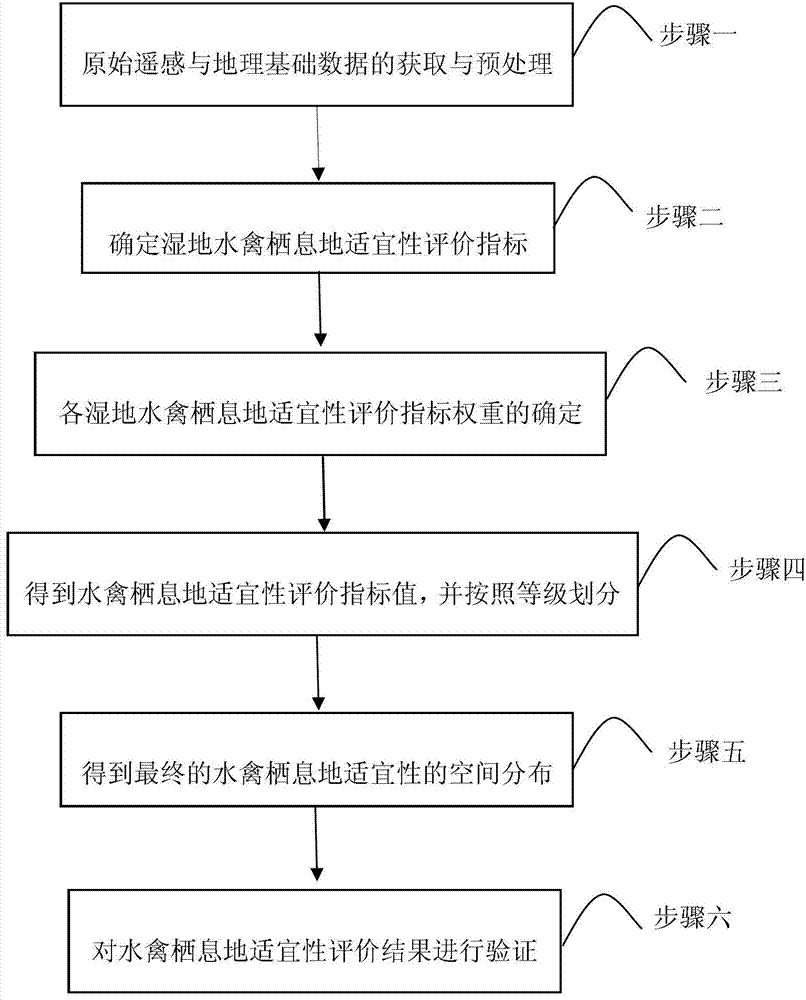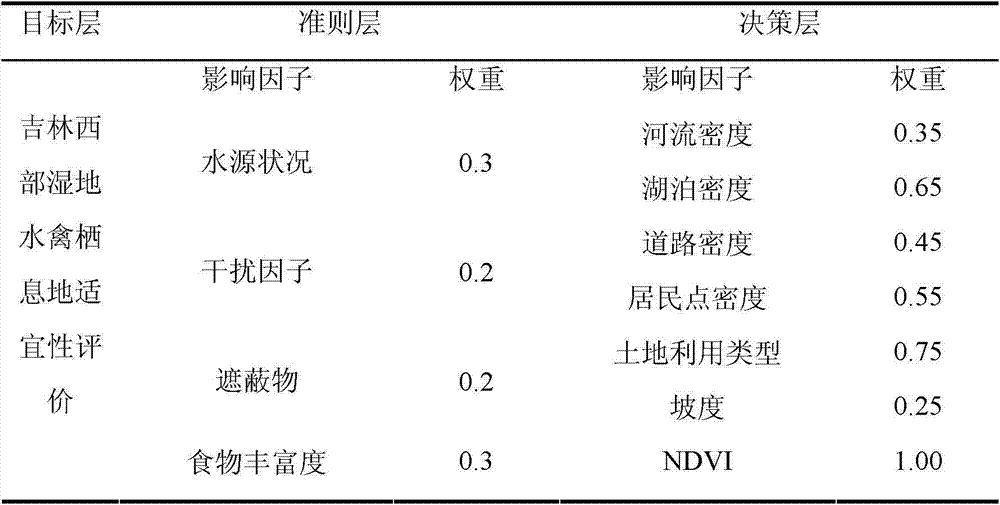Waterfowl habitat suitability evaluation method based on combination of remote sensing and geographical information system (GIS)
An evaluation method and habitat technology, applied in data processing applications, instruments, calculations, etc., can solve problems such as wetland environmental damage
- Summary
- Abstract
- Description
- Claims
- Application Information
AI Technical Summary
Problems solved by technology
Method used
Image
Examples
specific Embodiment approach 1
[0015] Specific implementation mode 1: Combination figure 1 versus figure 2 Explain this embodiment:
[0016] The western part of Jilin was selected as the experimental area for analysis to evaluate the suitability of the waterfowl habitat in the area in 2010:
[0017] 1. The acquisition and preprocessing of original remote sensing and geographic basic data:
[0018] Mainly include 2010 land use data, DEM data and TM remote sensing image data in western Jilin;
[0019] Preprocessing is mainly to extract vector data of rivers, lakes, roads and residential areas from land use data, extract the slope of western Jilin through DEM data, and use TM remote sensing image operation to obtain NDVI;
[0020] 2. According to the characteristics of wetland and waterfowl on the habitat, by analyzing the relationship between waterfowl habitat and the environment, determine the suitability evaluation index of wetland waterfowl habitat:
[0021] Select water source conditions (density of rivers and lak...
specific Embodiment approach 2
[0036] Specific embodiment two: This embodiment is different from specific embodiment one in that the evaluation index for determining the suitability of wetland waterfowl habitat described in step two is specifically:
[0037] Select water source conditions, disturbance conditions, shelters and food abundance that directly affect waterfowl habitats as the first-level evaluation indicators;
[0038] Select river density and lake density as the secondary evaluation index of water source status;
[0039] Select road density and residential area density as the secondary evaluation index of interference conditions;
[0040] Select slope and land use type as the secondary evaluation index of shelter;
[0041] NDVI was selected as the secondary evaluation index of food richness. Other steps and parameters are the same as in the first embodiment.
specific Embodiment approach 3
[0042] Specific embodiment three: This embodiment is different from the specific embodiment two in that the NDVI calculation method is:
[0043] NDVI=(NIR-R) / (NIR+R) formula (1)
[0044] Among them, NIR is the near-infrared band of remote sensing images, and R is the red band. Other steps and parameters are the same as in the second embodiment.
PUM
 Login to View More
Login to View More Abstract
Description
Claims
Application Information
 Login to View More
Login to View More - R&D
- Intellectual Property
- Life Sciences
- Materials
- Tech Scout
- Unparalleled Data Quality
- Higher Quality Content
- 60% Fewer Hallucinations
Browse by: Latest US Patents, China's latest patents, Technical Efficacy Thesaurus, Application Domain, Technology Topic, Popular Technical Reports.
© 2025 PatSnap. All rights reserved.Legal|Privacy policy|Modern Slavery Act Transparency Statement|Sitemap|About US| Contact US: help@patsnap.com



